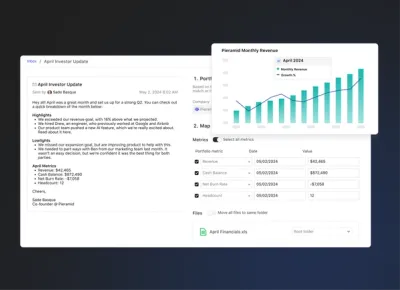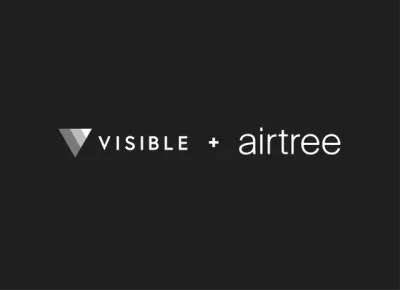
Thinking About Pitching Point Nine Capital? Check Out These Tips.

Point Nine Capital is one of the most—if not the most—sought-after early stage SaaS venture firm in Europe. With a portfolio that includes the likes of Zendesk, Front, and Algolia, the Point Nine team receives countless decks and pitches every day.
Part of the reason they receive so many pitches is Point Nine Capital hosts a contact form on their website that allows visitors to begin the pitch process. We’ve scoured their blog to gather what we believe are best practices when filling out the Point Nine Capital pitch form.
The Point Nine Capital Basics
This is a pretty straightforward section with a few questions about the founder and firmographics. A couple of key questions:
Which category/categories does your startup fall into? Point Nine is mostly known for investing in SaaS. However, they’re also interested in “internet startups” specifically marketplaces, AI, and crypto. If you fall outside of these categories, it may make sense to look to other investors.
When did you launch? While your specific launch date does not necessarily correlate to what stage you’re at, Point Nine’s goal is to be the first institutional investor a company takes on. They consider this the “0.9 stage” or when you’re “too big for private investors, too small for most VCs – many startups find it hard to raise capital, and that’s when we’d like to get involved.”
How much funding are you planning to raise? From the FAQ section of the Point Nine website, they generally invest from a few hundred thousand to 2 million Euros/USD. Point Nine generally has co-investors so if you’re looking raise much more than $3.5M, it may make sense to look elsewhere.
To learn more about what Point Nine Capital looks for in terms of general company information check out A Sneak Peak Into Point Nine’s Investment Thesis.
The Point Nine Capital Pitch Deck
Point Nine has shared plenty of information for crafting and sharing the perfect pitch deck. It is their first filter when sorting through potential investments, and it can make or break your pitch. There is no formula for a perfect pitch deck, but it should always answer this question for a potential investor: “is this company likely to become far more valuable in the future?”
According to Michael Wolfe—who is an advisor to Point Nine—a solid pitch deck will consist of the following:
- Summary – Orient the audience on what you’re doing, what stage, how much money you’re raising, etc.
- The problem you solve, and who has that problem – Pitch the problem, not the solution.
- Your Solution – Highlight your product. Show how and why your customers use your product.
- Customer Traction – Traction metrics and customer stories.
- The Market – Explain your Total Addressable Market
- Competitive Landscape – Talk about current market, future market, and your differentiators.
- Business Model – Talk about your revenue model, pricing, customer acquisition plan, etc.
- Team – Quick summary of your team and backgrounds.
- The Plan – Key milestones coming in the next 12-24 months.
- The Round – How much you’re raising, other investors, etc.
If you’re interested in learning more about putting together your pitch deck, check out these posts from the team at Point Nine:
- A Simple Pitch Deck [Template]
- How to bulletproof your fundraising deck
- Why we politely ask for a deck first
The Point Nine Capital Financials & Key Metrics
Point Nine will ask for a set of your KPIs in the form as well. Don’t fret! They’ve shared content and templates for what they’re looking for. Christoph Janz put together a SaaS example of what they are looking for in this post. The team also put together a marketplace metrics template in this post. The metrics in the templates above can be fairly granular, so a lite version should do the trick.
If you’re unsure about the state of your metrics, the team at Point Nine has also put together 6 SaaS metric frameworks to help benchmark against your peers:
- Revenue Growth: the T2D3 framework – The triple, triple, double, double, double framework. What your ARR should be growing at after every year.
- Revenue Growth Efficiency: SaaS Quick Ratio – Measures a company’s ability to grow it’s MRR in spite of churn.
- The LTV / CAC Ratio – How much revenue a customer generates as opposed to how much it cost to acquire them.
- Churn Benchmark – Benchmarks for SaaS company in different markets and stages.
- The 40% Rule – The idea that your growth % to profit % should be equal to or greater than 40%.
- Product Related Metrics – Find a “north star” unique to your business.
While great financial metrics are important, they are not compulsory at the early stage for the Point Nine team. Clement Vouillon, Senior Research Analyst at Point Nine, put it this way: “we’re still investing in pre-PMF startups with barely no revenue, what will be important is that you have a huge potential, some early sign of interest from the users (great retention for example, even with a couple of B2B early adopters), or an outstanding team (with a trackrecord).”
We hope these tips will help with your Point Nine Capital pitch. Ready to take your fundraising and investor relations to the next level? Check out the Founders Forward Blog to learn more about engaging and attracting investors.



